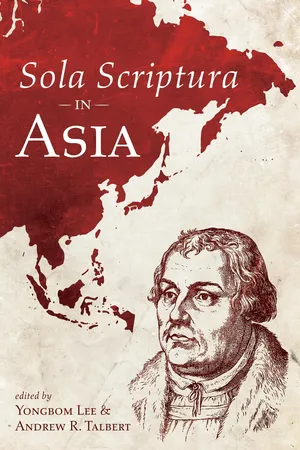![]()
Part 1
Biblical Theology
![]()
1
Hermeneutics and Pseudo-Postmodernity in Southeast Asia
Andrew R. Talbert
Introduction
In 1984, Allan Bloom opened his infamous book, The Closing of the American Mind: “There is one thing a professor can be absolutely certain of: almost every student believes, or thinks he believes, that truth is relative,” be that moral, epistemological, ontological, etc. Given that more than thirty years have elapsed since he wrote, it is worth revisiting this contention. But more than this, it is worth considering whether this cliché and corrosive Weltanschauung has spread abroad from the American context in which Bloom wrote in the rapid globalization of the twentieth and twenty-first centuries.
The short response is: yes, most professors in the U.S. will affirm that this is still the case (and some will revel in that). As to the second point, educators in our area of interest, Southeast Asia, will respond likewise in an insipid and soporific canon echoing across this relative world. Like their Western counterparts, students make vague references to “postmodernism” and “sociological” discoveries that put “truth” in question.
The fact of the matter, however, is that though many students pledge allegiance to the fading fashion of postmodern relativity (which students often interchangeably refer to as “subjectivism”), few have the sophistication of Foucault or Deleuze and their diversity, nor could they articulate anything of panopticism, post-structuralism, totality, or spatium and aion. And in the realm of morality, we have seen a subconscious, paradoxical, and partial shift away from moral relativism toward “values like tolerance and inclusion” (though not a similar shift toward religious belief and an ontological conception of “truth”) even in conservative nations, like Indonesia, at universities, cities, and communities engaged in the global exchange ideas—especially the marketplace. Yet while this global interchange formulates a tenuous simulacrum of morality, the relativisms of other arenas remain firmly in place (i.e., cultural, religious, metaphysical). The unfortunate invention of the smartphone—the true opiate of the masses—only perpetuates the problem, because distractedness occludes contemplation of their operative metaphysics: oughtness, beauty, existence, justice, violence, love, etc. So, students and graduates live in a fragmented and inconsistent world, perpetuating the fragmentation to the ensuing generations all the while denying their actual experience of the world with that word “relative.”
But our work here is more than a survey of diverse and depressing educational contexts. Instead, our interests lay in the further question invited by the longevity and constancy of this inane and involuntary falsehood so frequently asserted in the classroom: what is one to do? In educational contexts on this side of providence and the Divine Economy the answer is clear: hermeneutics. But by this we mean “hermeneutics” in the big-boned sense of reading texts and the world well in light of theology, philosophy, and the various fields that have contributed to the discovery of truth in recent years. Against the pseudo-postmodern, dogmatic anti-realists we will suggest that the cosmos and its first principles are (at least partially) knowable, and that the fallibilist liturgy fails to offer the best account of our knowledge and experience of the world. This will set the stage for hermeneutical reflections, and it merits further clarification.
A recent trend in theological works suggests, in many ways rightly, a return to ontology, particularly in the vein of Christian Platonism and Thomist Realism. These works generally foreground “being,” its relationship to “truth,” its priority to “knowing,” and then everything that follows in the various realms of metaphysics and human experience. Though in agreement with these perspectives, this particular essay proceeds pedagogically through the entry point of a primary experience of students—meaning and happiness—and then works back in concentric circles to ontology. Such a strategy generally avoids the floundering of students in the sea of ens, esse, entia, essentia, and existentia, and instead meets students where they are before leading them to the depths, much like Jesus’ encounter with the Samaritan woman (John 4:1–42). The sections that follow—morality and epistemology—likewise lead back to “being,” with a further consideration of how this project informs a charitable hermeneutics open to the claims of Scripture.
For those of a radical fideism akin to Luther’s theologia crucis (or, in a different way, to Barth), this may ring of a return to a scholastic marriage of theology and philosophy (“that whore!”) that he descried, and count...
